
Wittelsbach Square (Wittelsbacherplatz) is one of the most important squares in the center of Munich and the most beautiful classicist square in the city.
The square is located in the southwestern part of the Maxvorstadt district and is an extension of one of Munich's four main boulevards, Brienner Straße.
A major role in the formation of the area was played by the German architect Leo von Klenze, who designed the buildings around the square.
Its current name the area was in 1827, when it was named in honor of one of the oldest noble families of Wittelsbach.
Area of Wittelsbach has a substantially square shape, and due to its Central location in Munich, a space often used for events: a two-week Hamburg fish market (Hamburger Fischmarkt) is a popular summer and Christmas fair, Christmas eve and New year's.
Center Wittelsbacherplatz decorated with a bronze equestrian statue of the elector Maximilian I, mounted on a high pedestal. The statue was designed by Danish sculptor and artist Bertel Thorvaldsen and opened in 1839.


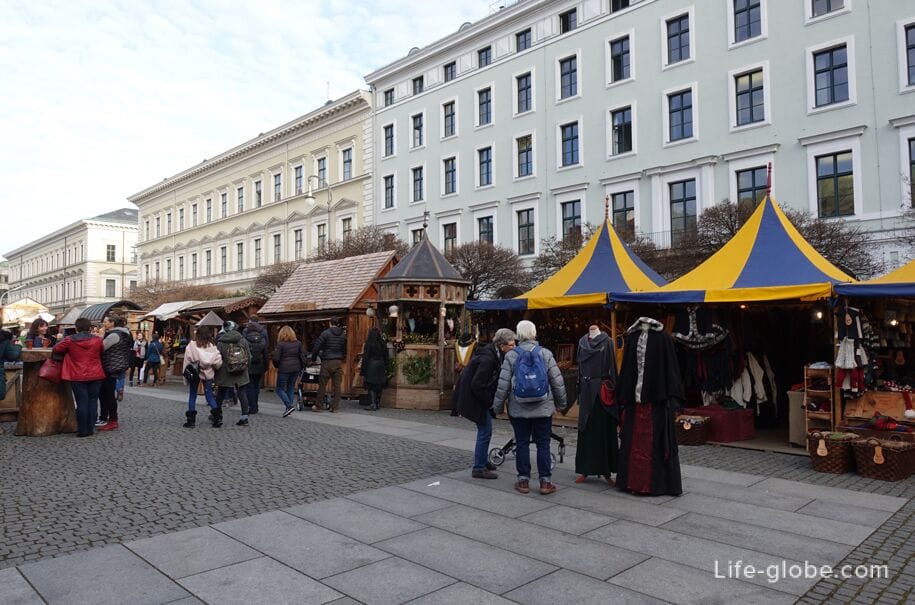
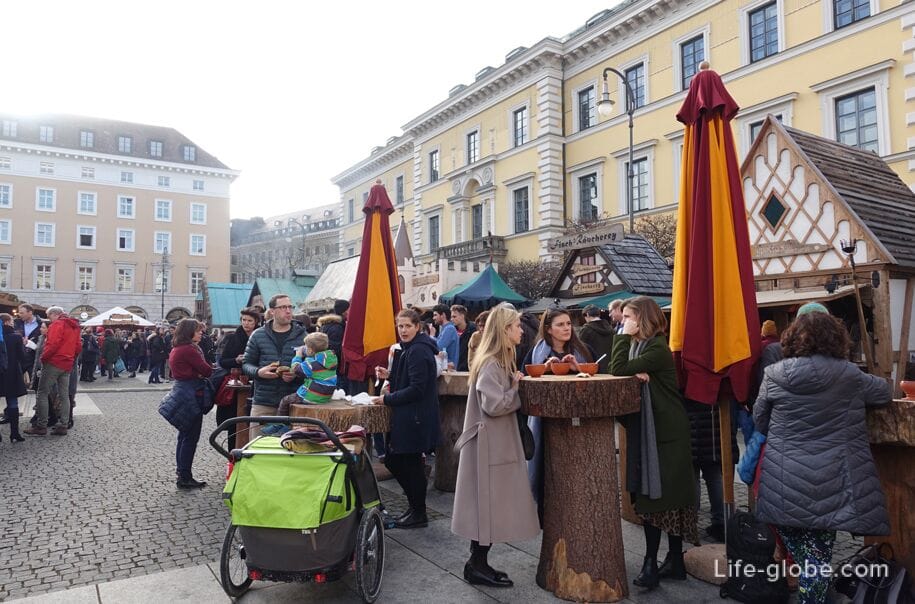
South side Wittelsbach square open to the street, Brienner Strasse. While the Northern, Eastern and Western sides the area is surrounded by significant historic buildings.
The former concert hall Odeon (Odeon Konzerthaus) was built by order of king Ludwig I in the years 1826-1828 by the architect Leo von Klenze.
Original rear acted the concert and ball rooms.
The building was almost completely destroyed during the Second world war, then rebuilt with deviations from the original project and now in its walls is housed the Bavarian Ministry of the interior.
The former auditorium became the courtyard was closed with a glass dome in 2003-2007.
The building is located on the East side of Wittelsbach. The main facade overlooks the nearby area of Odeonsplatz.
Address Odeon: Odeonsplatz, 3.

The Ludwig Ferdinand Palace (Palais Ludwig Ferdinand), also known as the "Palace of Alfonso" ("Alfons-Palais"/ Alfons-Palais), located on the North side of the square, at the address: Wittelsbacherplatz, 3-4.
The Palace was designed by Leo von Klenze in 1825-1926 years. The architect himself lived in this house for 25 years. Since 1878, the Palace belonged to Prince Alfons and Ludwig Ferdinand of Bavaria.
During the Second world war the Palace was largely destroyed. After the building was repaired and in 1949 leased to Siemens & Halsk AG (S & H). The current company Siemens AG acquired the building from the heirs of Ludwig Ferdinand in 1957 and founded within the walls of the Palace his headquarters. Subsequently, the company built additional administrative buildings that adjoin the Palace of Ludwig Ferdinand from the North and West sides, but do not violate the architecture and appearance of the Palace.
A carefully restored Palace with decorative elements characteristic of the era of classicism.
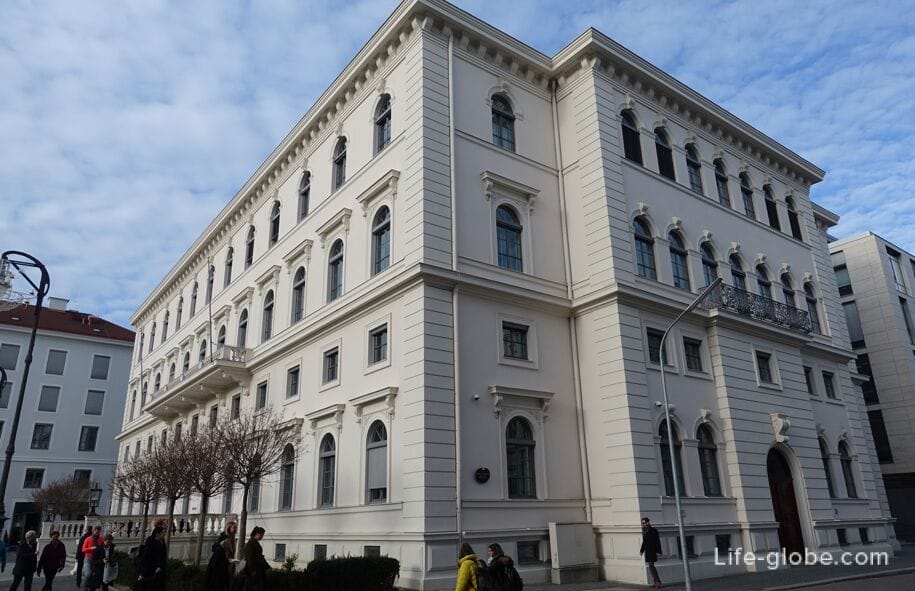
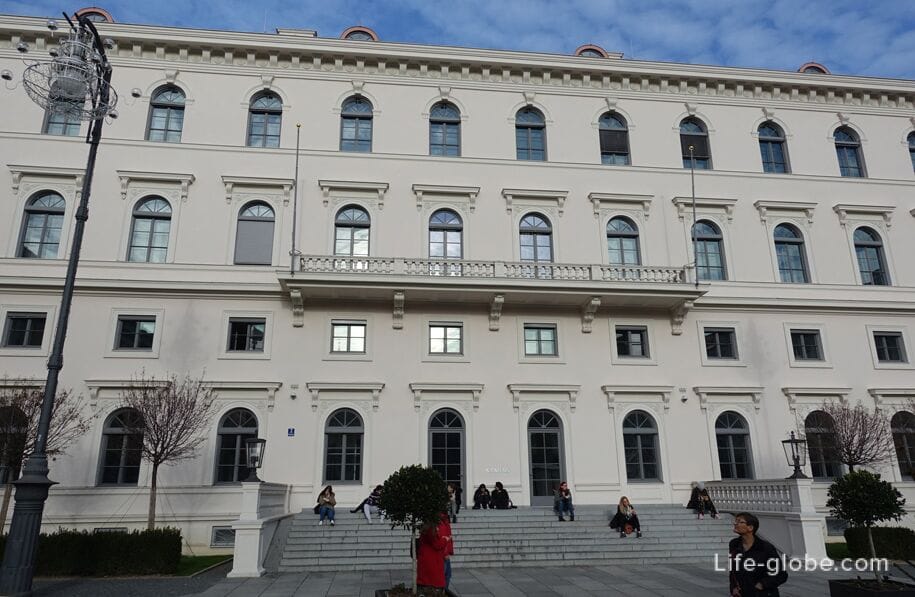
Palace Arko-Zinneberg (Palais Arco-Zinneberg), also known as the Palace of Kamenrider (Gampenrieder Palais), marks the Western side of the square. Address of the Palace: Wittelsbacherplatz, 1.
The Palace was built in 1824-1825 years as a dwelling house according to the plans of Leo von Klenze. After completion the house was sold to the family of Arko-Zinneberg.
In 1833 the Palace was given as a wedding gift to the count Maximilian von Arco-Zinneberg, Royal Bavarian Treasurer, who lived in the house with his wife Leopoldine von Waldburg-of call and 13 children.
During the First world war, the building served as a hospital.
During the Second world war the building was heavily damaged. After it was allowed and recovered in 1959 and 1960. Preserved only portal area with a balcony, the facades were restored to the original appearance. The modern interior has been designed by architect Roderigo Fikom. The Palace still belongs to the family of Arco.
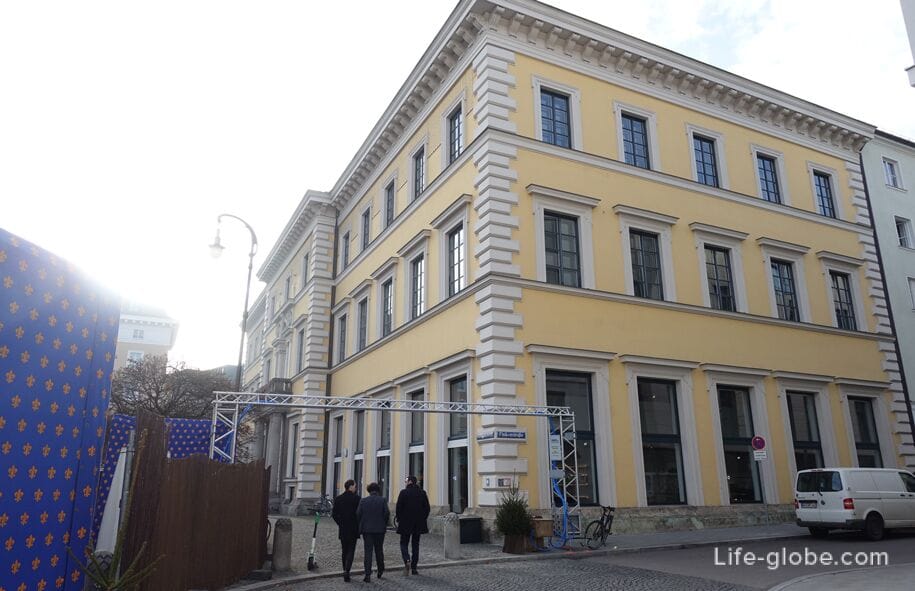
Main facade of the building overlooking the square of Wittelsbach, has stucco decorations, the arched portal is flanked by two columns supporting a balcony with a balustrade. The corners of the building have architectural masonry. West facade of the building is bordered by a courtyard.

From the North-East side from the square of Wittelsbach, the passage to the square Odeonsplatz, is another historical Palace, designed by Leo Von Klenze - the Palace of Leuchtenberg or Leuchtenberg Palace (Palais Leuchtenberg), which was built in the years 1817-1821 and was the residence of Duke Eugen von Leuchtenberg.
During the Second world war the building was heavily damaged. The free state of Bavaria acquired the ruined building in 1957 and demolished ruins. In the period from 1963 to 1968 a new building was constructed in the style and templates of the architect von Klenze.
Currently, the building housed the Bavarian state Ministry of Finance.
The address of the building: Odeonsplatz, 4.
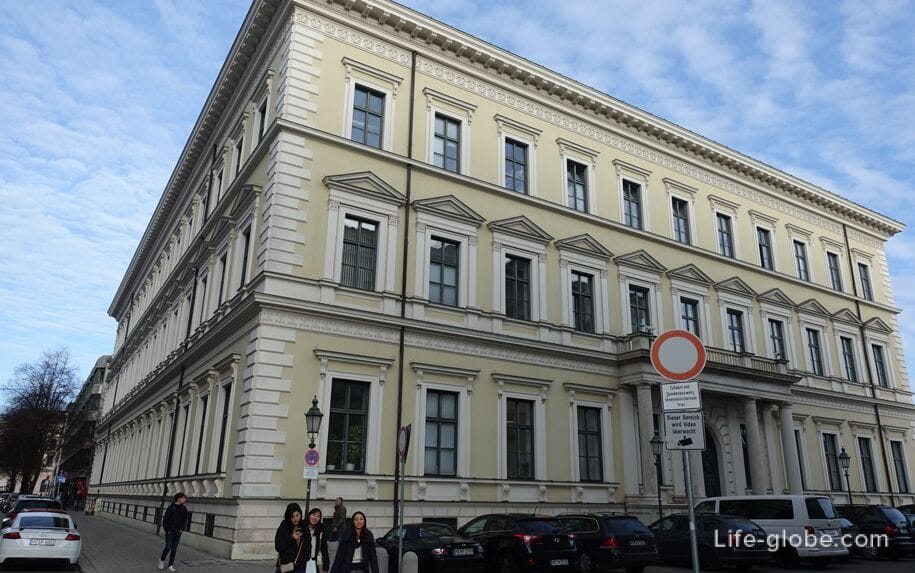
In the South-West from the area of Wittelsbach is the once magnificent building "Café Leopold" ("Cafe Luitpold" / Café Luitpold).
It was a classic café, which opened in Munich in 1888. After the destruction during the Second world war the building was rebuilt, and the café reopened in 1948.
During the reconstruction of the surrounding buildings in the years 1886-1888 was created by a large courtyard.
A small Museum above the café features photos and documents on the history of the house.
Cafe address: Brienner Straße 11. Website cafe: cafe-luitpold.
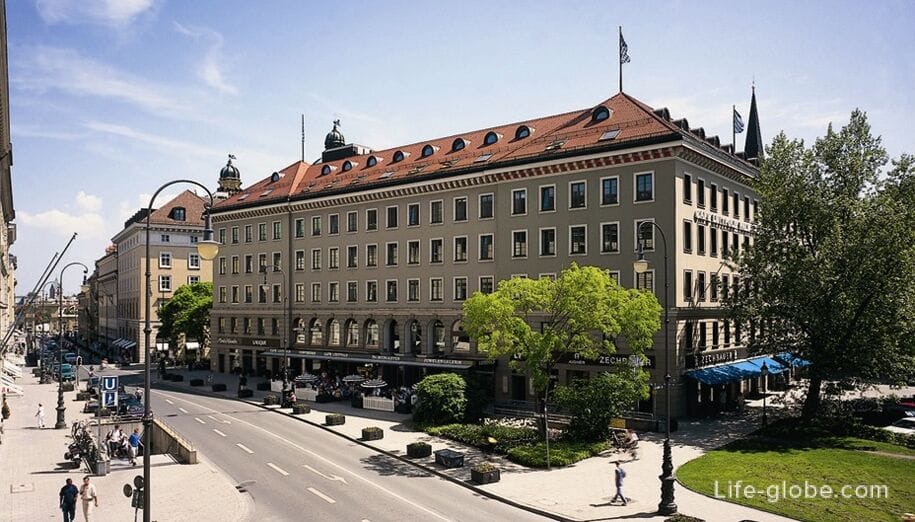
The family-run hotel Antares with Parking and Wi-Fi throughout.
The rooms: the flat-screen TV, soundproof Windows and doors. The private bathroom has a Hairdryer.
Room rates include Breakfast. Link to the hotel
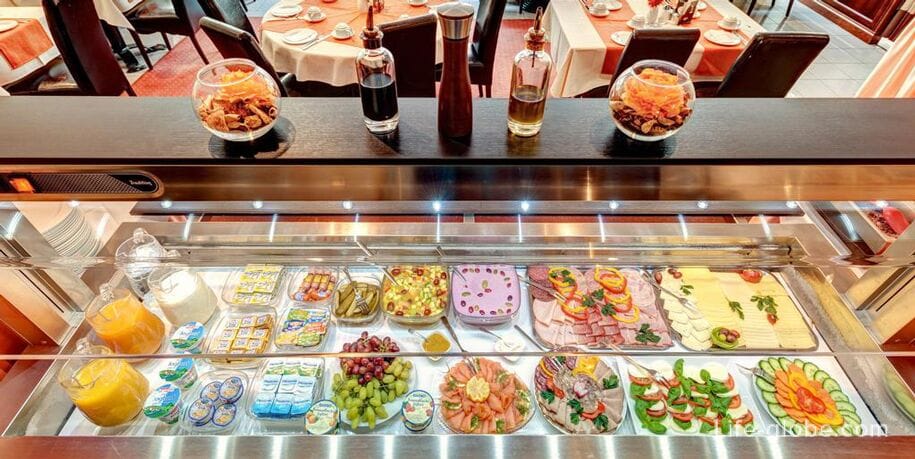
5-star hotel Bayerischer Hof with 5 restaurants, 6 bars and a Spa with a rooftop pool, sauna and gym.
The rooms and suites: air conditioning, high speed Wi-Fi. Complimentary fruit basket and bottle of mineral water. Link to the hotel
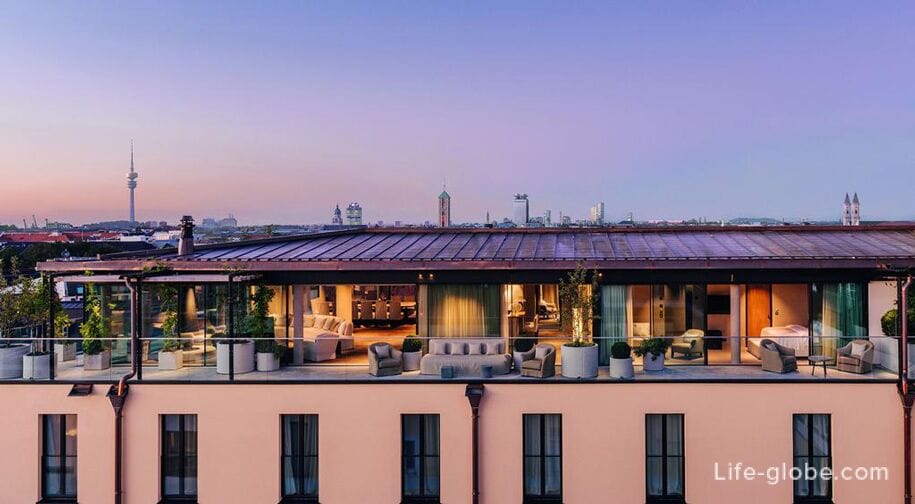
All accommodation in Munich, including near Wittelsbacherplatz, you can view and book here